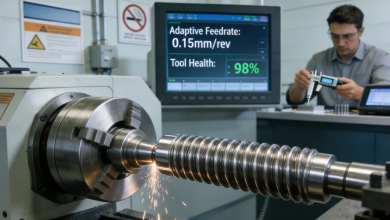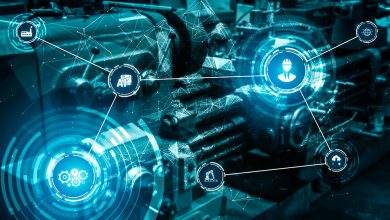
In product development and innovation, firms are always looking for an advantage.
One approach that has emerged as a game-changer is the integration of Artificial Intelligence (AI) into IHUT market research, also known as in-home usage testing or ihut studies.
By harnessing the power of advanced algorithms and machine learning, AI-enhanced IHUTs are revolutionizing the way products are tested, refined, and brought to market.
The Evolution of In Home Usage Tests in Modern Product Development
For quite some time now, traditional in-home usage tests (IHUTs) have been valuable tools used by companies as part of their market research methods to gain insights on how consumers interact with their products within their natural habitats.
That said, these techniques often involve manual collection and analysis of data which is time-consuming; prone to human mistakes; and limited in scale.
Enter AI-enhanced IHUTs, which exploit state-of-the-art technologies to simplify this process, allowing faster, more comprehensive data collection, analysis, and decision-making.
Transformation Through AI
The integration of AI into IHUT research has ushered in a new era of product development, offering numerous benefits over traditional methods:
Advantages of Traditional Approaches
- AI Algorithms and the Speed of IHUTs: A lot of data when analyzed by AI algorithms can be processed more quickly than human analysts by means of product testing.
- Machine Learning Integration: Machine learning models use historical data to continuously improve their accuracy, thereby making product testing more precise in terms of predictions and recommendations.
- Predictive Analytics: AI based predictive analytics can predict consumer behavior in a highly dynamic marketplace leading to forward-thinking companies that produce products that meet demand.
- Real-Time Data Collection and Analysis: The development process is instantly corrected through real time captured feedback from smart devices and sensors about product usage.
Enhancing Consumer Insights Through Market Research
One of the major benefits of AI-assisted IHUTs is the ability to gather consumer feedback and gain deeper consumer insights.
Deep Learning for Consumer Preferences: Consumer preferences and trends during product testing are found using AI algorithms which analyze huge datasets such as purchase histories as well as social media sentiments on usage patterns among others.
Personalized User Experience: Such an approach will enable companies to offer consumers personalized experiences through leveraging artificial intelligence in designing individualized products, thus improving brand loyalty.
Comparison: AI-Enhanced vs. Traditional IHUTs
| Feature | AI-Enhanced IHUTs | Traditional IHUTs |
| Data Collection | Real-time, automated | Manual, time-consuming |
| Analysis Speed | Near-instantaneous | Prolonged, subject to human limitations |
| Consumer Insights | Personalized. deep learning | Generalized, limited scope |
| Predictive Capabilities | Advanced predictive analytics | Reactive, based on historical data |
| Scalability | Highly scalable | Limited by human resources |
Challenges and Solutions in AI-Enhanced IHUTs
While AI-enhanced IHUTs offer numerous advantages, working with a market research firm can help address the challenges that must be addressed:
Data Privacy Concerns in Consumer Feedback
As AI systems process vast amounts of consumer data, ensuring data privacy and security is paramount. Companies must implement robust data governance policies, encryption protocols, and adhere to strict regulatory compliance standards.
Integration Complexity
Integrating AI systems into existing product development workflows can be complex, requiring specialized expertise, infrastructure, and change management strategies.
Partnering with experienced AI consultants and leveraging cloud-based AI platforms can help mitigate these challenges.
Case Studies: Successful Implementation of AI in IHUTs
Here are two case studies showcasing the successful implementation of AI in IHUTs as part of a market research project by leading consumer goods companies:
Case Study 1: Procter & Gamble’s Use of AI in IHUTs
Procter & Gamble (P&G), a world leader in consumer packaged goods, has been an industry innovator for many years. In order to preserve competitive advantage, the company has adopted IHUTs that incorporate AI as an invaluable tool for product development and refinement.
The Challenge
Consumer products are covered by P&G’s portfolio from personal care products to household cleaners. Traditional IHUTs were time-consuming and ineffective at capturing detailed consumer insights across different product categories and demographic groups.
The Solution
Modify AI collaborated with P&G in developing a multifaceted platform for AI-enhanced IHUTs. This involved pooling data from various resources such as smart home devices, wearables, and social media sentiment analysis.
Advanced machine learning algorithms sorted through this information to identify patterns and preferences that would have been difficult to recognize using manual techniques alone. The system also included predictive analytics capabilities enabling them to figure out what emerging consumer trends are likely going to be so that they can develop such products proactively.
The Results
This is because of the following key achievements made possible by the use of artificial intelligence enhanced in-home usage tests (AI-enhanced IHUTs) by P&G:
- Revealed regional or cultural preference which allowed adaptation of local product offerings
- Improved product performance and sustainability through data-driven design iterations
P&G’s embrace of AI-enhanced IHUTs has solidified their position as a leader in innovation, enabling them to deliver products that consistently meet and exceed consumer expectations.
Case Study 2: Nestlé’s AI-Driven IHUTs for Product Innovation
As a global leader in the food and beverage industry, Nestlé recognizes the importance of staying ahead of consumer trends and preferences. To drive product innovation and maintain their competitive edge, the company has implemented AI-enhanced IHUTs across various product lines.
The Case
Nestlé has a large and diverse product base including confectionary and pet food. The company’s diverse portfolio of products posed unique challenges for gathering consumer insights.
Traditional IHUTs could not provide real-time feedback or usage patterns across different product categories and customer segments.
The Solution
Nestlé partnered with AI and data analytics firms to develop a comprehensive AI-enhanced IHUT strategy. They deployed smart devices and connected appliances in selected households, allowing them to collect real-time data on how consumers interacted with their products in natural settings.
Advanced AI algorithms analyzed this data, identifying usage patterns, taste preferences, and potential areas for improvement. Machine learning models continuously refined their predictions, enabling Nestlé to make data-driven decisions and iterate on their products rapidly.
The Results By embracing AI-enhanced IHUTs, Nestlé has experienced significant benefits:
- Nestle uses AI to help drive down the 30% greenhouse gasses linked to food production
- Increased consumer satisfaction and brand loyalty through personalized product experiences
- Gained valuable insights into regional and cultural taste preferences, informing localized product offerings
- Improved product formulations and packaging based on consumer feedback, usage data, and purchase intent
Nestlé’s commitment to AI-enhanced IHUTs has positioned the company as a leader in product innovation, enabling them to deliver products that consistently meet and exceed customer expectations across diverse markets and product categories.
Future Trends and Innovations
The integration of AI into in-home usage test (IHUT) is just the beginning of a broader transformation in product development:
AI-Driven Predictive Modelling: As AI capabilities advance, predictive modeling will become increasingly sophisticated, enabling companies to anticipate customer needs and market trends with greater accuracy.
Expansion of AI in Various Sectors: Beyond consumer products, AI-enhanced IHUTs are poised to revolutionize industries such as healthcare, education, and finance, driving innovation and improving services across diverse domains.
Frequently Asked Questions (FAQs)
1. How does AI improve product development?
Artificial intelligence (AI) is key in improving and speeding up the process of developing products in several ways:
- A. Data Analysis and Insights: Through AI algorithms, an analysis of huge volumes of data from diverse sources such as customer feedback, market trends, sentiments on social media and product usage patterns can be done. By analyzing this data, the company gets to know what customers like, where they feel that there are problems or what is new in the market enabling it to make a much more informed decision during product development.
- Predictive Modeling: Based on historical information and existing trends, artificial intelligence (AI)-)-powered predictive models can predict consumer behavior changes, market shifts, or product performance. These projections help companies preemptively create products that will meet the changing market requirements; thereby reducing the chances of coming up with products that may end up failing to satisfy the expectations of consumers.
- Rapid Prototyping and Testing: Artificial intelligence-driven simulations plus virtual prototyping enable firms to iterate through their product designs quickly testing them without having physical prototypes saving time for the organization’s resources. Besides this fact, AI-enhanced In-Home Usage Tests (IHUTs) provide companies with real-time feedback about how consumers use their products in real life so that they become better at it. This has helped a lot since all these insights have been considered thus making researchers find out which products are becoming slower than usual.
- Personalization and Customization: AI algorithms can analyze individual consumer preferences and usage patterns, enabling companies to develop personalized and customized products that cater to specific needs and preferences. This level of personalization enhances consumer satisfaction and brand loyalty.
2. What is the role of AI in product innovation?
AI plays a pivotal role in driving product innovation by:
- Identifying Unmet Needs: By analyzing consumer data, market trends, and social media sentiment, AI can identify unmet consumer needs and potential opportunities for innovative products or features.
- Ideation and Concept Generation: AI algorithms can explore numerous product concepts and ideas, combining existing knowledge in novel ways to generate innovative solutions that human designers may not have considered.
- Virtual Experimentation: AI-driven simulations and virtual testing environments allow companies to explore and iterate on innovative product concepts without incurring high costs or risks associated with physical prototyping and testing.
- Accelerating Innovation Cycles: AI-powered automation and data-driven decision-making streamline the innovation process, enabling companies to rapidly ideate, test, and refine innovative products, reducing time-to-market and gaining a competitive advantage.
3. How can artificial intelligence be used in innovation?
Artificial Intelligence can be leveraged in various ways to drive innovation:
- Automation of Repetitive Activities: Among the tasks that AI may automate are data crunching, report writing, and customary behaviors, which free up human resources to concentrate on more artistic and better creativity.
- Discovery and Knowledge Management: Organizing, structuring, and insights discovery from large sets of research papers, patents, domain-specific knowledge can be done using AI systems; thus allowing new connections and ideas for researchers and innovators.
- Idea Generation and Evaluation: It is possible for AI algorithms to generate unique concepts by blending existing knowledge in unconventional ways. Additionally, AI can be used to rate and rank ideas against predetermined standards like their feasibility, market viability or relevance to the company’s strategic goals.
- Collaborative Innovation: Through AI-enabled virtual assistants and chatbots facilitating teamwork among groups or individuals who share what they know with one another then ideation along with problem solving processes are made efficient hence effective.
- Simulation & Modeling: To virtually test as well as refine innovative proposals on concepts such as goods or services or even operations before committing real resources into production or implementation because of simulation driven by artificial intelligence.
Conclusion
AI-enhanced IHUTs are revolutionizing the way products are developed and refined, offering unprecedented insights into consumer behavior, preferences, and trends.
By leveraging advanced algorithms, machine learning, and predictive analytics, companies can drive innovation, deliver personalized experiences, and stay ahead of the competition.
However, as with any transformative technology, companies must address challenges such as data privacy concerns and integration complexity to fully realize the potential of AI-enhanced IHUTs.
Embrace the future of product development by exploring AI-enhanced IHUTs. Partner with experienced AI consultants, invest in data governance and security, and unlock the power of AI to drive innovation and delight your customers.







